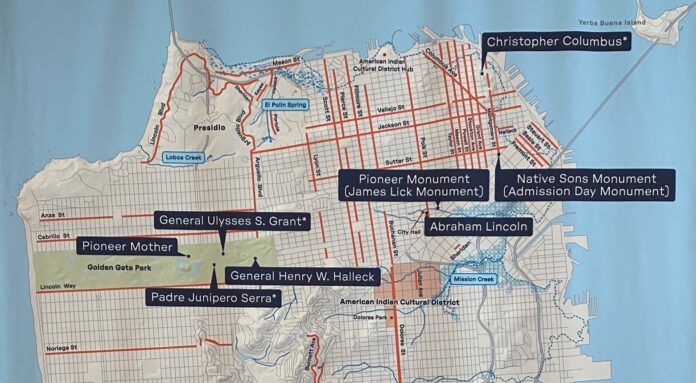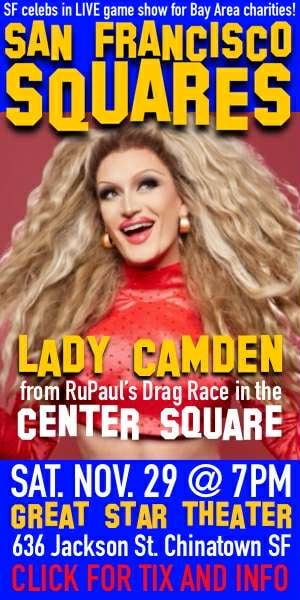Modern-day echoes of a chilling history are exposed beginning with the introductory text of the thought-provoking Indigenize SF exhibition (runs through August 26) at the San Francisco Museum of Modern Art:
“In the 19th century, tens of thousands of American Indians throughout the United States were killed in government-sanctioned genocide. Yet several individuals who led the massacres and attempted erasures continue to be honored across the City in public artworks in the San Francisco Civic Arts Collection and city street names”.
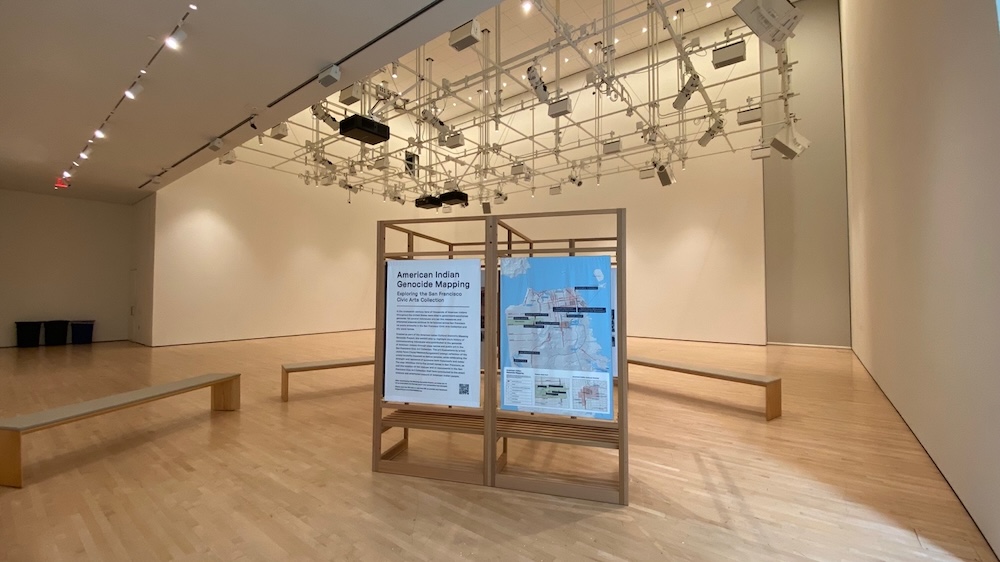
The exhibition is being presented by the American Indian Cultural District, in collaboration with the SFMOMA, and was created as a part of the AICD’s Mapping Genocide Project. For the show, artist Jackie Fawn (Yurok/Washoe/Surigaonon) produced seven reimagined illustrations.
Visitors encounter a large map of San Francisco that identifies and locates 35 city street names and 10 statues and/or monuments named after historical figures who have contributed to the direct violence and attempted erasure of American Indian people. Red lines identify names of streets. Names in a black field identify statues or monuments.
The statue or monument names include King Carlos III, Juan Bautista de Anza, Pioneer Mother Monument, Padre Junipero Serra, General Ulysses S. Grant, General Henry W. Halleck, Abraham Lincoln, Pioneer Monument (James Lick Monument), Christopher Columbus, and Native Sons Monument (Admission Day Monument). In 2020, the statues of Padre Junipero Serra, General Ulysses S. Grant, and Christopher Columbus were removed from their locations and placed in storage.
Red-line street names familiar to residents of the city include (Christopher) Columbus Avenue, (John B.) Montgomery Street, (Dr. William J.) Powell Street, (John) Sutter Street, (Gasper de) Portola Drive, (Padre) Junipero Serra Boulevard, and (President Abraham) Lincoln Way. Lesser known names include (Juan Bautista de) Anza Street, (General Henry W.) Halleck Street, (Colonel Julian McAllister) Julian Avenue, (Major General Erasmus D.) Keyes Avenue, and (Peter Hardeman) Burnett Avenue.
Although the exhibit connects city streets to specific individuals, it provides no information as to their role in government-sanctioned genocide, except for President Abraham Lincoln and Juan Bautista de Anza. The data linking President Abraham Lincoln to government-sanctioned genocide is included in a detailed description in the pamphlet that accompanies the exhibit. An excerpt from the pamphlet states the following:
“During his presidency, which lasted from 1861 to 1865, he signed death warrants for 38 Dakota prisoners, leading to the largest documented mass execution of Native Americans in US history”; and “Authorized military campaigns that resulted in the massacre of at least 741 California Natives by federal troops. 120 Mattole, Yurok, and others were killed in Humboldt County, and 853 others were rounded up for removal to a reservation, where many died of starvation or disease. US troops based at Fort Humboldt killed more than one hundred Native people between February and June 1863”.
The data linking Juan Bautista de Anza to government-sanctioned genocide is included in a detailed description in the pamphlet that accompanies the exhibit. An excerpt from the pamphlet states the following:
“Juan Bautista de Anza (1736-1788) played a significant role in establishing the foundation of the Spanish mission system, which facilitated the genocide, displacement, and cultural erasure of Tribal communities in California. De Anza’s military campaigns were designed to suppress Native resistance and secure Spanish dominance, contributing to the widespread suffering of Tribal communities. Yet despite his violent actions, he remains commemorated across California.”
The exhibit includes more than these lists of commemorated individuals responsible for the genocide of American Indians. Indigenize SF confronts the City’s legacy by reimagining place names, monuments, and artwork through the Indigenous lens of Jackie Fawn. This exhibit marks the beginning of an ongoing initiative to challenge and transform historical narratives.
Compare the reimagined illustration produced by Ms. Fawn of President Lincoln to his statue:
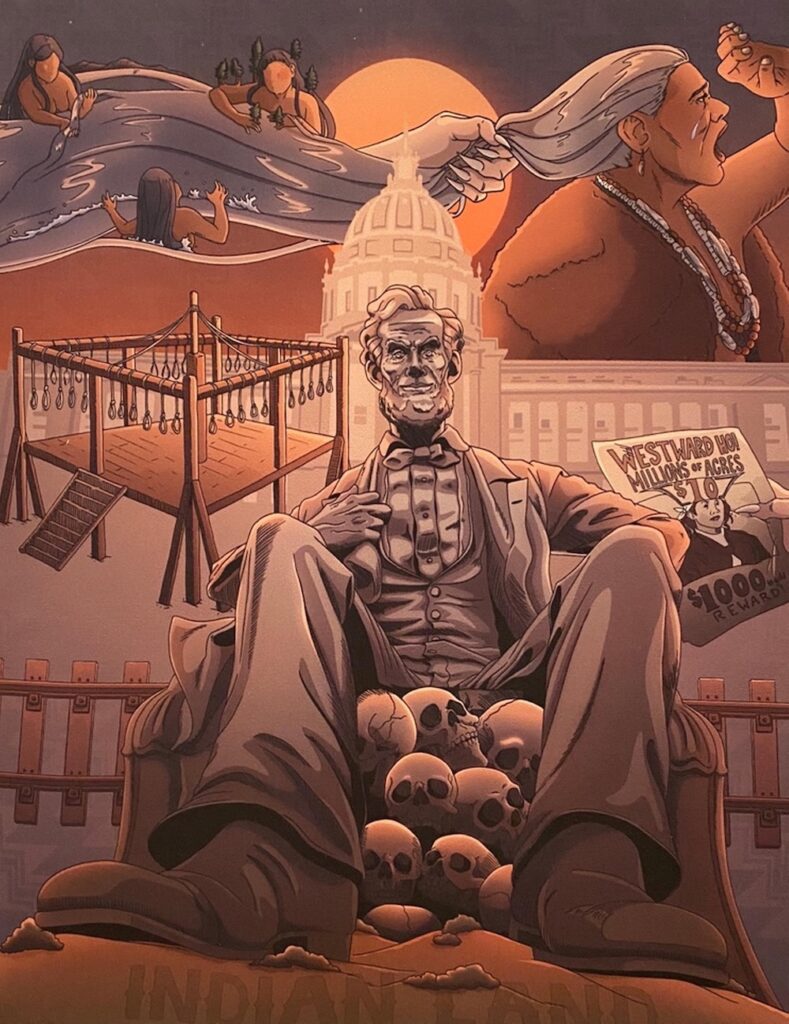
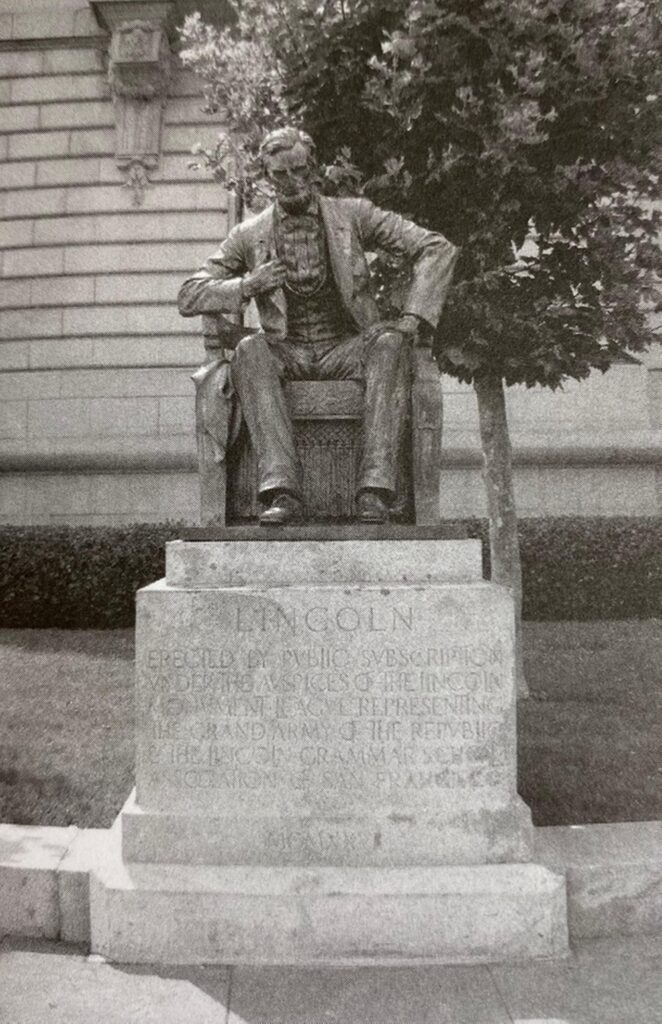
Compare the reimagined illustration produced by Fawn of Juan Bautista to his statue:
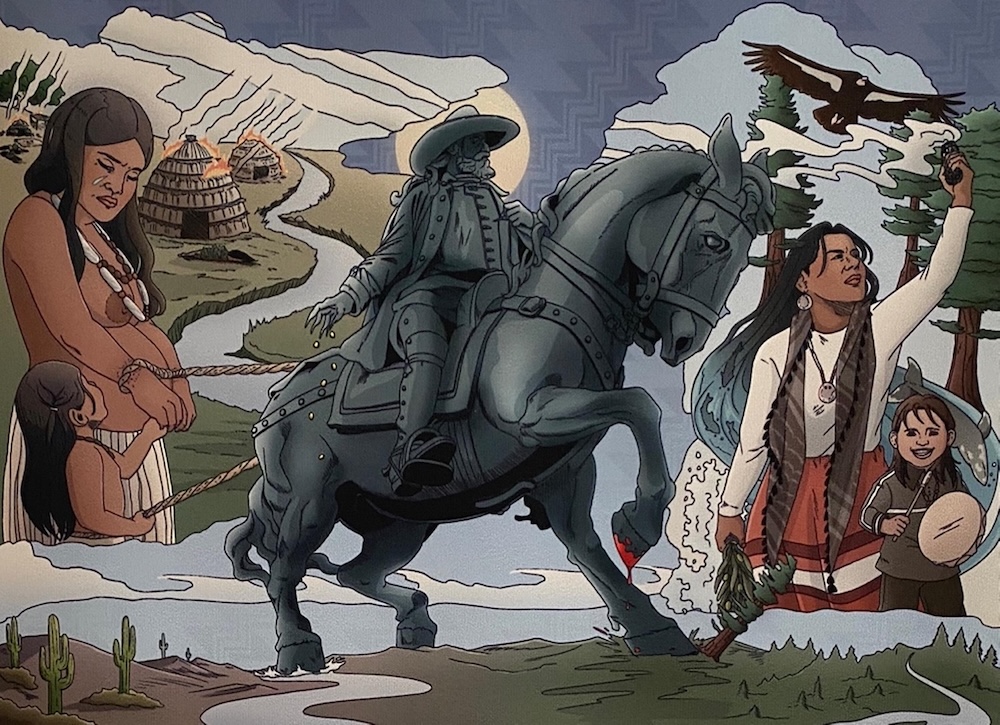
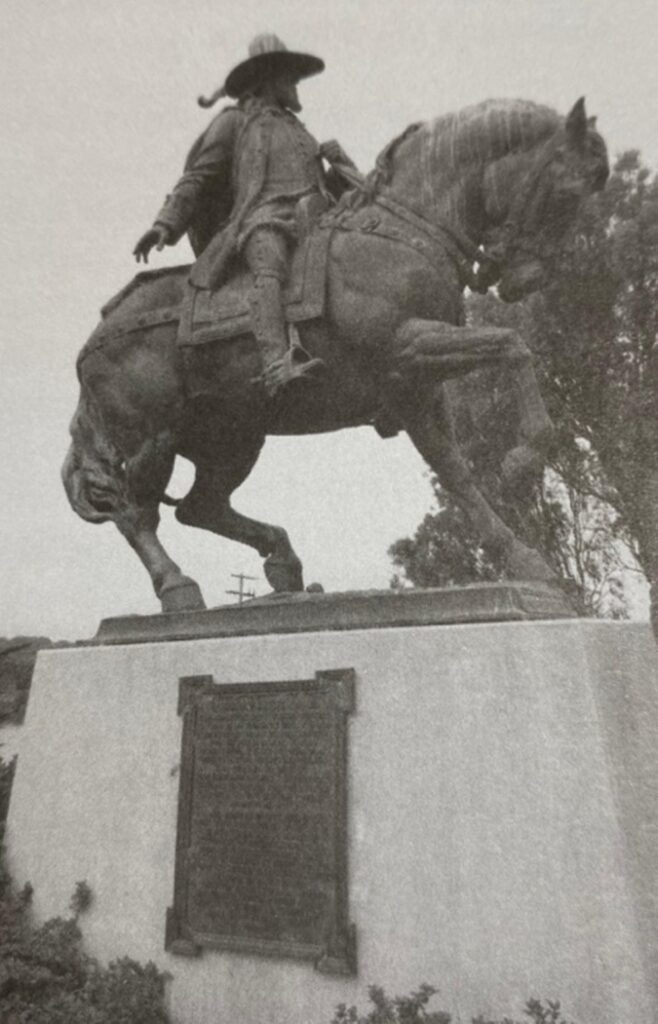
Fawn’s work prompts serious reflection on the untold brutality imposed on Native peoples, while celebrating the strength and resilience of survivors both historically and today.
“This project has been a great reflection, artistically and culturally, to me as an Indigenous mother,” Fawn said in a statement. “In an era where many are looking to the future, it was a moment to look into the past and follow the ink lines on how we all got here. We must recognize the Ohlone people’s and all Native American people’s resiliency, which has enabled me and my relatives to be here today.”
AICD Mapping Genocide Project and Fawn’s Indigenize SF are steps forward in the critical evaluation of the history of past crimes perpetrated against American Indians and those who are responsible for those crimes. The exhibition challenges our egos and cherished beliefs with strong and clear new evidence by making connections between names and cultural objects in San Francisco.
Upcoming Mapping Genocide events will include a Sat/23 community feedback session with the AICD at SFMOMA. The project is the start of a difficult questioning process that asks San Franciscans to engage in an honest dialogue about our shared history. It’s time.
INDIGENIZE SF runs through August 26 at SFMOMA. More info here. Information on further Mapping Genocide and AICD events here.

